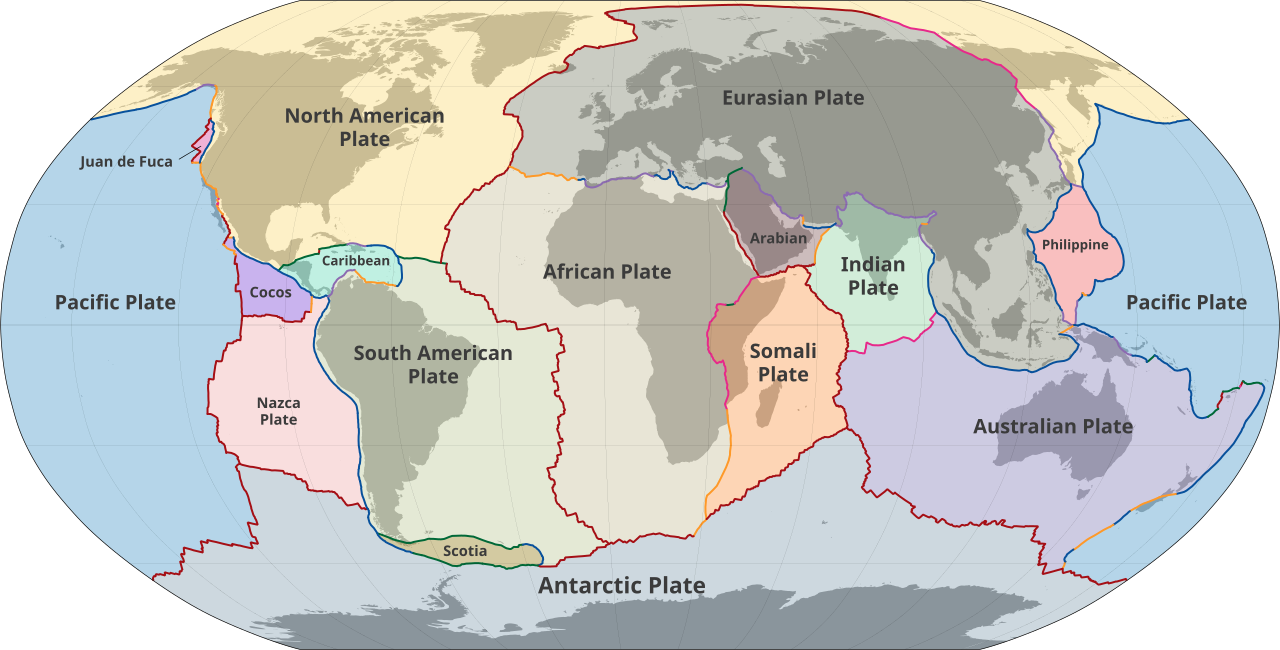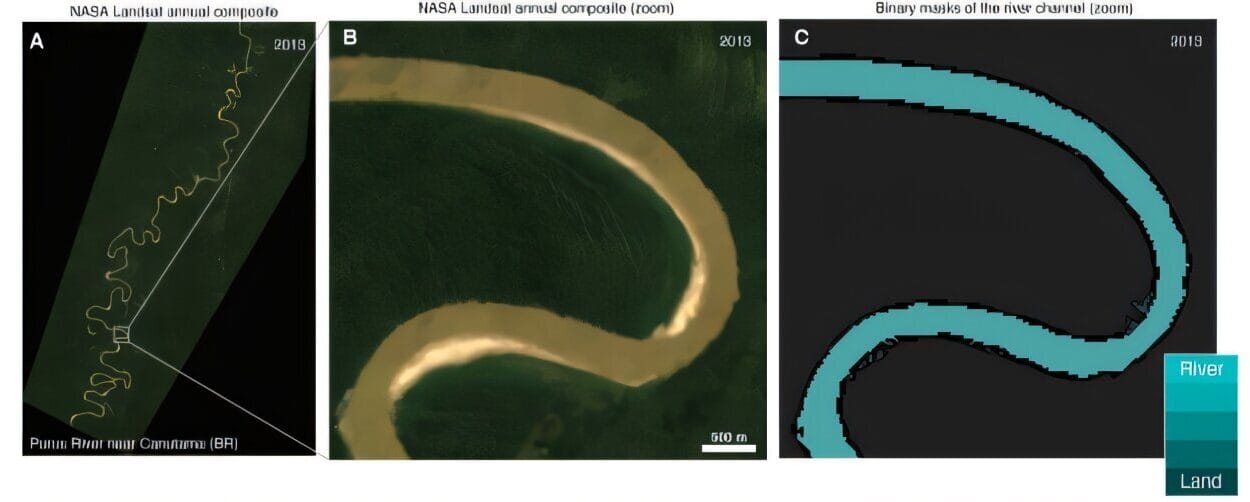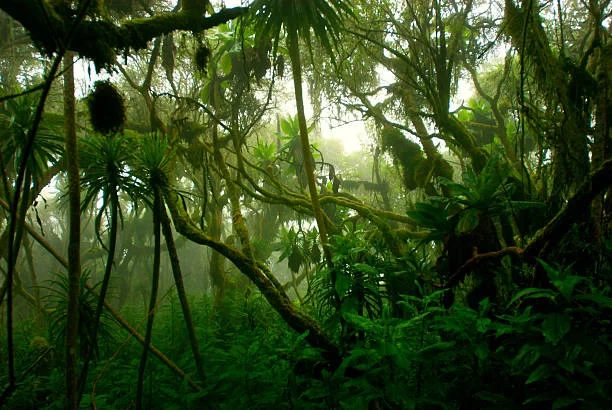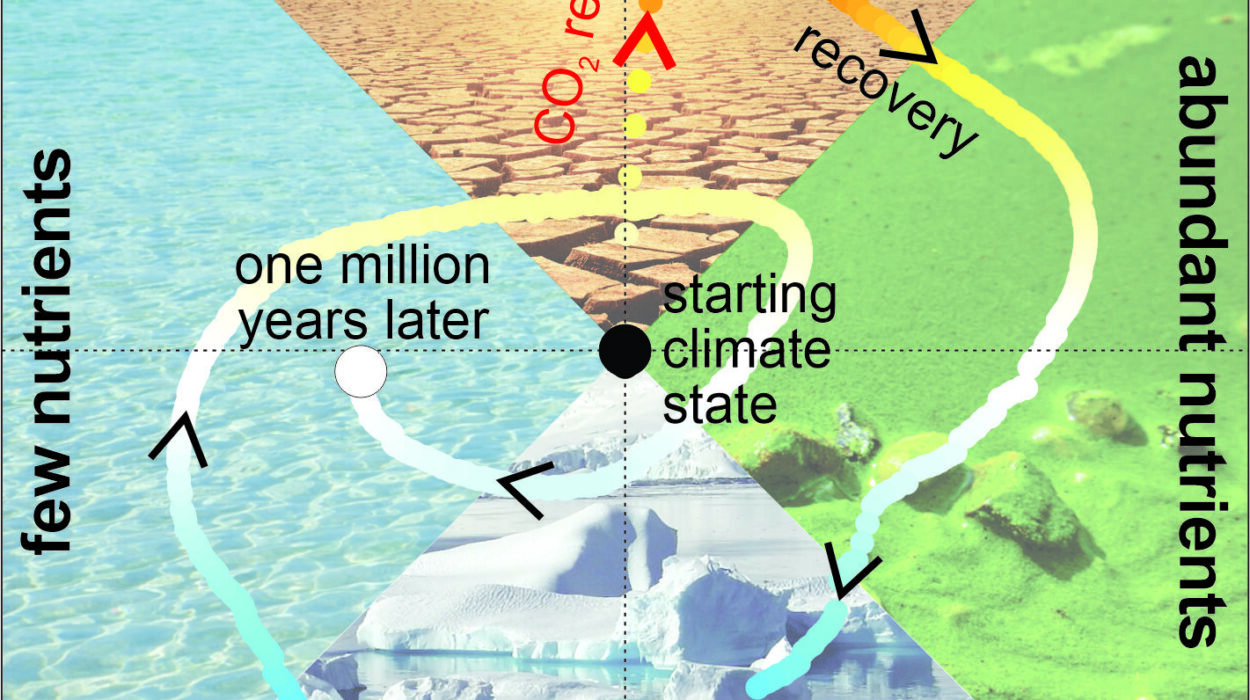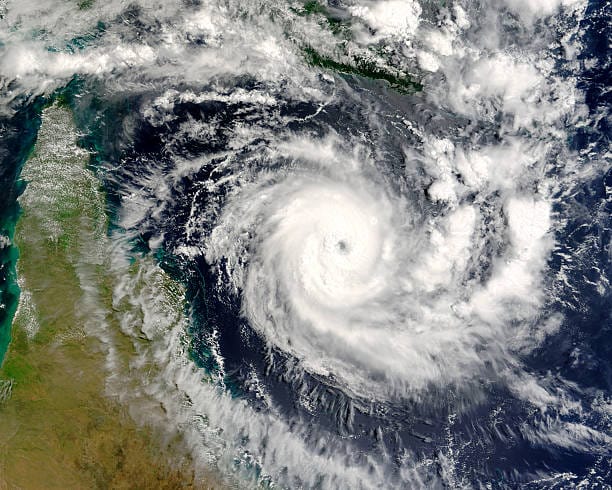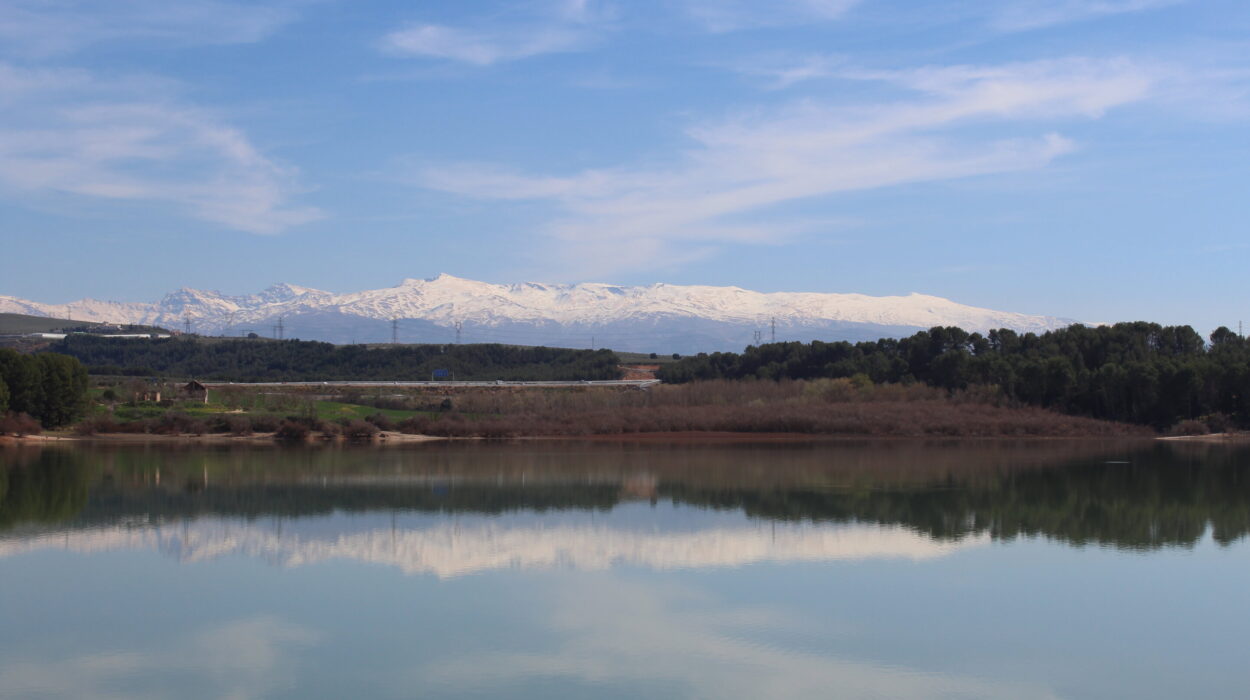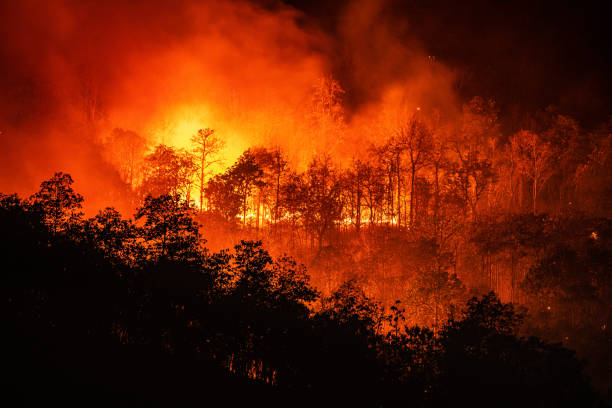Four and a half billion years ago, the Earth was young and violent—a molten orb wrapped in clouds of poison and fire. In this turbulent crucible, continents did not exist. Oceans had not yet formed. Life was still a whisper in the future. Beneath a surface of shifting lava and falling asteroids, something extraordinary began to happen—something that would forever sculpt the world we call home. The outer layer of the Earth began to cool and crack. What formed wasn’t a single solid shell, but a puzzle of giant pieces—tectonic plates—that would drift, collide, and reshape the surface for billions of years.
This slow dance of rock, hidden beneath our feet, would give birth to mountain ranges that scrape the sky, tear continents apart, and open vast ocean basins. It would trigger earthquakes, awaken volcanoes, and craft the very geography that sustains life. Plate tectonics, as we call it today, is not just a process—it’s the restless heartbeat of our planet.
A Theory Born from Wanderers
For most of human history, the ground was thought to be immovable, solid, and eternal. Mountains were considered divine fixtures. Continents, it was assumed, had always been where they are now. But in the early 20th century, a German meteorologist named Alfred Wegener noticed something strange. The coastlines of continents—South America and Africa in particular—seemed to fit together like pieces of a jigsaw puzzle. Fossils of identical species were found on distant continents, separated by vast oceans. How could this be?
Wegener proposed a bold theory: perhaps these continents were once joined in a supercontinent he called Pangaea, which had since broken apart and drifted. His idea, known as continental drift, was met with ridicule. After all, he couldn’t explain how solid continents could plow through the seafloor. Scientists demanded a mechanism, and Wegener, though brilliant, had none.
But the Earth had secrets yet to reveal.
The Deep Sea Whispers the Truth
It wasn’t until the mid-20th century, with the advent of sonar during World War II, that the truth began to surface. As scientists mapped the ocean floor, they discovered something astonishing—a vast mountain range snaking through the middle of the Atlantic Ocean. This mid-ocean ridge wasn’t just a pile of submerged mountains; it was a factory where new seafloor was being born.
From these ridges, molten rock was rising, solidifying, and pushing older seafloor outward. It became clear that the seafloor itself was spreading. This discovery, combined with paleomagnetic evidence and earthquake data, finally gave substance to Wegener’s dream. The Earth’s surface was, indeed, moving—not as drifting continents, but as interlocking plates floating atop a viscous, convecting mantle.
Thus, the theory of plate tectonics emerged—a grand, unifying idea that explained earthquakes, volcanoes, mountain formation, and the drifting of continents all at once.
The World in Motion
Imagine looking at the Earth from space—not as a fixed blue marble, but as a living, breathing entity. Underneath the surface, convection currents in the mantle act like conveyor belts, carrying the plates above them. These tectonic plates are enormous—some span thousands of kilometers. They carry not only landmasses but entire oceans upon their backs. They move slowly, at roughly the speed your fingernails grow, but with incredible power.
Where plates move apart, like at the mid-ocean ridges, new crust is created. Where they collide, mountains rise or one plate is forced beneath the other in a process called subduction. Where they grind past one another, like the San Andreas Fault in California, earthquakes rumble.
It is in these collisions and separations that Earth is reshaped—where continents are stitched and torn, where volcanoes erupt new land into existence, and where the ocean floor recycles itself back into the fiery depths.
Mountains from Collisions, Valleys from Rifts
The majestic Himalayas, home to the highest point on Earth, owe their very existence to a crash—a slow-motion collision between the Indian Plate and the Eurasian Plate. Tens of millions of years ago, India, once a lonely island near Madagascar, began drifting northward at breakneck speed for a tectonic plate. When it rammed into Asia, the land crumpled upward, forming the world’s mightiest mountain range.
In contrast, when plates pull apart, the Earth stretches and thins. The East African Rift Valley is a dramatic scar across the continent, a place where Africa is slowly splitting in two. Someday, perhaps millions of years from now, a new ocean will form here, swallowing what is now dry land.
These processes are not events—they are stories unfolding over geological time, carving the landscape inch by inch, year by year.
Fire Beneath Our Feet: Volcanoes and Tectonic Fury
Few natural events remind us of Earth’s power as dramatically as a volcanic eruption. A mountain that breathes fire is more than just a spectacle; it is a direct window into the deep processes that shape our planet. Most of Earth’s volcanoes are born along tectonic boundaries—particularly subduction zones, where one plate dives beneath another.
As the subducted plate sinks into the mantle, it begins to melt, creating magma that rises to the surface. The result can be devastating or awe-inspiring, depending on one’s proximity. The Pacific Ring of Fire, a horseshoe-shaped zone around the Pacific Plate, is dotted with volcanoes created by this fiery tectonic ballet.
Yet volcanoes are not merely destructive. They have also been creators. Volcanic activity has birthed entire island chains, like the Hawaiian Islands, which formed over a hotspot in the mantle—a plume of heat that melts rock from below as the plate above moves slowly past. Each island is a bookmark in time, a reminder of our planet’s dynamic heart.
Earthquakes: The Cracking Skin of a Living Planet
If volcanoes are Earth’s exhalations, earthquakes are its growing pains. They strike without warning, unleashing energy stored in fault lines where plates rub against each other. When the stress becomes too great, the rock breaks, and the ground lurches violently.
Some of the deadliest natural disasters in human history have been earthquakes—San Francisco in 1906, Chile in 1960, Japan in 2011. These are not isolated tragedies but consequences of tectonic boundaries grinding and slipping in their endless motion.
Yet these same processes have shaped the land we depend on, lifting mountains that trap rain and create rivers, forming basins where civilizations flourish, and even triggering undersea landslides that form new coastlines. Earthquakes remind us that even solid ground is part of an ongoing transformation.
The Breath of Life: Plate Tectonics and the Climate
The influence of plate tectonics stretches far beyond geology—it reaches into the atmosphere, the oceans, and even the history of life itself. When continents shift, they change ocean currents and wind patterns. This, in turn, alters climates. The collision that formed the Himalayas didn’t just raise mountains—it altered monsoons across Asia and contributed to global cooling by increasing the rate at which carbon dioxide was pulled from the atmosphere through weathering.
Volcanic eruptions, too, can send clouds of ash and gases into the sky, cooling the Earth for months or even years. Over the grand sweep of time, the rearrangement of continents has created ice ages, greenhouses, deserts, and rainforests—all by nudging Earth’s thermostat.
In essence, tectonic forces are one of the great drivers of Earth’s climate system. Without them, the Earth might long ago have become a dead, stagnant world like Mars.
The Cradle of Life: How Motion Gave Rise to Biology
It’s easy to think of tectonics as violent and destructive, but there’s another side—one of fertility and life. The constant renewal of the Earth’s surface creates the diversity of environments in which life can evolve. Volcanic ash enriches soil. Uplifted land becomes new habitat. Subduction recycles nutrients. Hydrothermal vents at mid-ocean ridges harbor entire ecosystems of extremophiles—organisms that thrive without sunlight.
There is even a hypothesis that plate tectonics played a key role in stabilizing the Earth’s climate long enough for complex life to emerge. Without this planet-sized engine regulating atmospheric gases and cycling materials, Earth might have remained a barren rock, devoid of oceans and life.
Plate tectonics didn’t just shape the land we walk on—it helped shape life itself.
When Continents Collide—and Drift Apart Again
Earth’s history is punctuated by grand geological epics: the assembly and breakup of supercontinents. Pangaea, the most famous of these, existed around 300 million years ago. But it was not the first, nor will it be the last. Before Pangaea, there were Rodinia and Gondwana. After Pangaea’s breakup, the continents began their current drift, creating the familiar world map we recognize today.
These cycles—of coming together and pulling apart—are known as the supercontinent cycle, and they occur roughly every 500 million years. We are now in a phase of separation, but someday, in a future so distant it defies comprehension, the continents will collide again, forming a new supercontinent. Geologists have already imagined names for it—Pangaea Proxima, Novopangaea. Whatever it is called, it will be born of the same tectonic forces that have shaped our world for eons.
Tectonics and Us: Living on a Restless Planet
For all its ancient grandeur, plate tectonics is not a relic of the past. It is alive, still sculpting the Earth beneath our cities and fields. Humanity’s greatest civilizations have often flourished near tectonic boundaries—where fertile volcanic soils and fresh mountain rivers provide life, and coastal access fuels trade. But these same regions come with danger.
Understanding tectonics has become crucial not only for science but for safety. From earthquake-resistant architecture to volcanic monitoring, we’ve learned to live with a dynamic Earth. Satellite imaging, GPS, and seismographs now track the planet’s movements in real-time, giving us windows into its moods and murmurs.
But we also owe a debt to these forces. Without tectonic uplift, there would be no mountains to capture rain, no rich soils to feed billions, no shifting lands to create the variety of habitats that made evolution possible.
The Poetry of Moving Stone
There is something profoundly poetic in the idea that the ground beneath our feet is not permanent. Mountains rise, oceans widen, continents drift—not over years, but over lifetimes of species, over chapters in the Earth’s long story. Plate tectonics reminds us that the planet is not just a setting for life—it is a character in the drama, evolving, reacting, breathing in deep time.
It tells us that change is the only constant. That destruction can be a prelude to creation. That the world we know is the brief expression of deeper, older rhythms. And that, in the end, even stone must dance.
Epilogue: The Ever-Shifting Now
As you read this, Africa is splitting apart. The Atlantic Ocean is widening. The Himalayas are still climbing, inch by inch. Deep under the Pacific, a new island may be forming from magma even now, unseen and unnamed. The Earth is not finished. It never will be.
And neither, perhaps, are we. As humans look outward to other planets, to moons and stars, we begin to understand how rare and wondrous a living, tectonically active planet truly is. Mars once had volcanoes, but they are silent. Venus has no plate tectonics. Earth alone bears this restless surface, this miraculous churn that makes oceans and continents, rain and life.
Plate tectonics shaped the world we live in—and in doing so, shaped us. Our landscapes, our resources, our weather, our history—all carry the fingerprints of a planet in motion.
Beneath every footstep, the journey continues.
